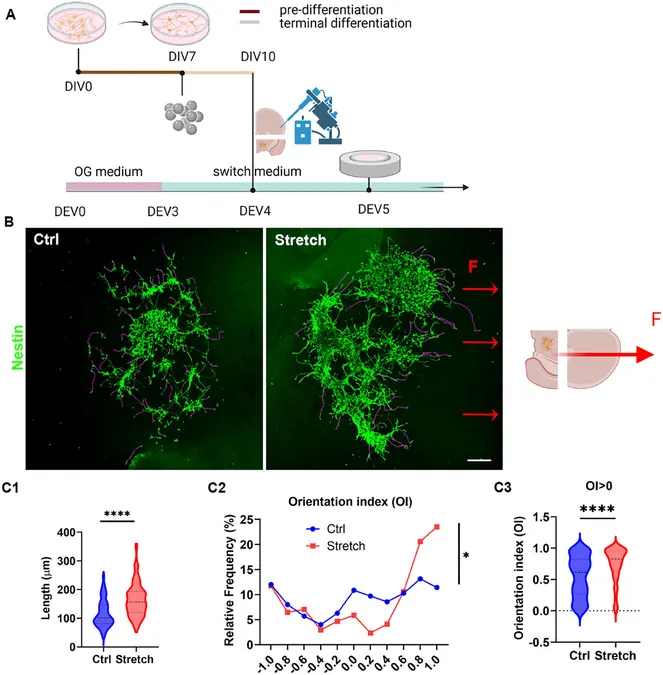
Revolutionary Technique Uses Magnetic Nanoparticles to Restore Connections in the Brain
2025-07-07
Author: Yu
A Groundbreaking Discovery in Neuroregeneration
A pioneering study led by Professor Vittoria Raffa at the University of Pisa, alongside Assistant Professor Fabian Raudzus, has unveiled an innovative method that leverages magnetic nanoparticles to direct the growth of brain cells. This technique aims to make stem cell treatments for Parkinson's disease and other neurological disorders more effective than ever.
Understanding Parkinson’s Disease and Its Challenges
Parkinson's disease is a debilitating condition marked by the gradual loss of dopamine-producing neurons in a specific area of the brain known as the substantia nigra. This degeneration disrupts crucial pathways that control movement, leading to severe dopamine deficiency and motor function impairments.
The Revolutionary 'Nano-Pulling' Technique
While stem cell therapies using dopaminergic progenitors derived from human cells have shown hope in clinical trials, a significant hurdle remains: the challenge of guiding transplanted axons to their intended targets within the adult brain over long distances. To bridge this gap, researchers developed an ingenious technique dubbed ‘nano-pulling.’ Using magnetic nanoparticles (MNPs) guided by external magnetic fields, they can exert precise mechanical forces to steer the growth of axons toward target areas in the brain.
Real-Life Testing of the Method
The research team tested this innovative system by creating a model that simulates early-stage Parkinson's disease. They co-cultured brain slices representing the substantia nigra and striatum, then implanted neuroepithelial stem cells preloaded with MNPs into the substantia nigra. When exposed to a magnetic field, the MNPs generated minute forces, promoting axonal growth precisely in the desired direction.
Impressive Results: Enhanced Cell Growth and Functionality
Published in *Advanced Science*, the study revealed that nano-pulling markedly improved neural projection growth towards the striatum. The cells displayed increased branching, a rise in synaptic vesicle formation, and superior microtubule stability—all vital signs of neuronal maturation. This approach was effective not only in neuroepithelial stem cells but also in dopaminergic progenitors derived from human induced pluripotent stem cells, highlighting its broad clinical relevance.
Safety and Future Prospects
Crucially, the technique demonstrated safety; cell viability and tissue integrity remained uncompromised, even after extensive mechanical stimulation. This groundbreaking work signifies a major leap in regenerative medicine for neurodegenerative diseases. Nano-pulling holds promise for effectively reconstructing the nigrostriatal pathway, enhancing the success of cell transplantation therapies, and potentially restoring essential brain connectivity.
Looking Ahead: Expanding the Horizon of Neurotechnology
Future research will aim to optimize the properties of the nanoparticles and assess long-term effects in living organisms. Experts are also keen to explore the wider applications of nano-pulling in various models of central nervous system injuries and disorders, opening doors to new treatments for a range of neurological challenges.



 Brasil (PT)
Brasil (PT)
 Canada (EN)
Canada (EN)
 Chile (ES)
Chile (ES)
 Česko (CS)
Česko (CS)
 대한민국 (KO)
대한민국 (KO)
 España (ES)
España (ES)
 France (FR)
France (FR)
 Hong Kong (EN)
Hong Kong (EN)
 Italia (IT)
Italia (IT)
 日本 (JA)
日本 (JA)
 Magyarország (HU)
Magyarország (HU)
 Norge (NO)
Norge (NO)
 Polska (PL)
Polska (PL)
 Schweiz (DE)
Schweiz (DE)
 Singapore (EN)
Singapore (EN)
 Sverige (SV)
Sverige (SV)
 Suomi (FI)
Suomi (FI)
 Türkiye (TR)
Türkiye (TR)
 الإمارات العربية المتحدة (AR)
الإمارات العربية المتحدة (AR)